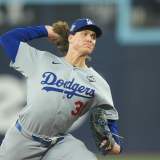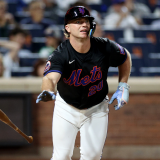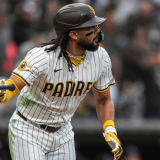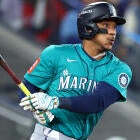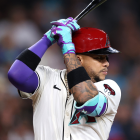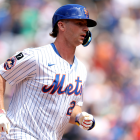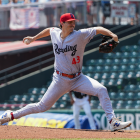MLB trade deadline: Cardinals embrace selling, but have more work to do if they want to contend in 2024
St. Louis' deadline was a decent start toward getting back to contention, but that's all it was -- a start
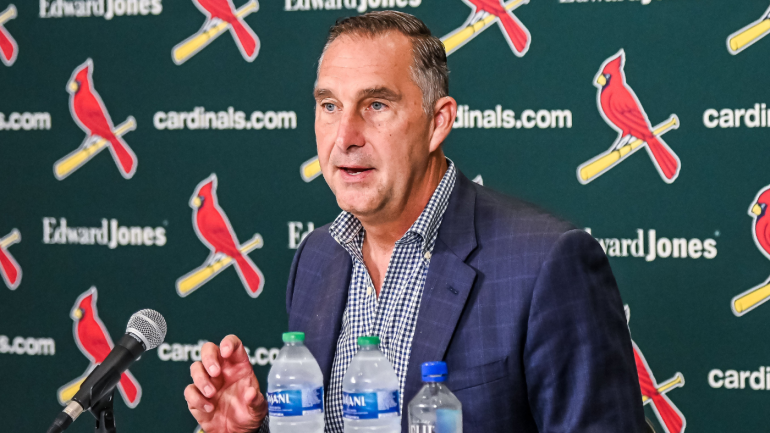
Bowing to the undeniable reality of a deeply disappointing 2023 season to date, the St. Louis Cardinals leading up to the trade deadline undertook one of the deepest sell-offs of any team. It was a bit jarring to see a team that hasn't endured a losing season since 2007 embrace non-contention to such an extent, but the approach was justifiable.
In large measure, it was justifiable because they are not indulging in a deep rebuild. Rather, they're pivoting toward a return to relevance in 2024. That's certainly a plausible aim, and their deadline work has advanced that aim, albeit to a limited extent. The real work on contending again lies ahead of them in the offseason to come.
Team president John Mozeliak and company dealt away pending free agents – Jordan Montgomery, Jordan Hicks, Jack Flaherty, and Chris Stratton were all in their walk years – plus Paul DeJong, whose pricier 2024 option made him a de-facto walk-year player. Previous talks about contract extensions with some of those names yielded nothing, so the Cardinals opted to move them. As such, the loss of those players doesn't really affect their 2024 outlook.
Speaking of that outlook, the Cardinals' most pressing need is to add velocity and, most essentially, swing and miss to a rotation that's lacked both of those things for too long. The Cardinals for years made pitching hay with an approach that prioritized inducing ground balls in front of a strong infield defense. That approach hasn't held up as the team's defense has degraded and the ban on infield shifts was implemented. More broadly, hitters in the current era are just too good at doing damage on contact, and the best way to counter that is to disallow contact in the first place. Thus, you have St. Louis' need for more starting pitchers who can do that.
On this front, they added to the fold some pitching prospects who have potential, to varying degrees, to address this organizational need. Most promising is right-hander Tekoah Roby, whom they acquired from the Rangers in the Montgomery-Stratton swap. There's risk involved given his high-stress delivery and injury history, but there's also significant upside in place – probably more upside than any current member of the rotation or anyone currently close to being a member of that St. Louis rotation. Provided his shoulder woes clear up in time to get some game run this season, Roby is a threat to crack the 2024 rotation from the jump and be an asset there. Another name of note is that of Zack Showalter, who came to the Cardinals as part of the Flaherty swap with Baltimore. He has the velocity they seek – and room to add more – and he's put up elite strikeout numbers in his brief professional career. However, he's also 19 years of age and pitching in the A-level Carolina League. He helps the prevailing mission, but he won't help in 2024.
Other acquired arms like Sem Robberse, Adam Kloffenstein, and Drew Rom could find their ways to the St. Louis rotation in the seasons to come, but other than maybe Robberse if he hits his high-percentile outcome they don't look like long-term fixtures in a contending rotation.
This is generally work well done considering they largely traded away expiring contracts. The winter, though, will be even more critical for the Cardinals. That free agent market – or, perhaps less likely, the trade market – is where they must address the front of the rotation. Mozeliak has indicated this indeed will be the approach, as it should've been last offseason. The Mozeliak front office has on occasion had a dubious touch with free agents, but that's no excuse to recoil from what needs to be done, and that's a heavy monetary investment in starting pitching. They have a great deal of salary coming off the books, but owner Bill DeWitt Jr. also needs to be willing to expand the budget over and above just replacing the payroll that's going to be shed.
When it comes to spending said money, the Cardinals almost certainly won't be serious suitors of Shohei Ohtani. However, they should be willing to make a vigorous pursuit of, say, Blake Snell or Lucas Giolito. A reunion with Jordan Montgomery is a worthwhile consideration, as is a signing of Michael Lorenzen as a mid-rotation addition. That's of course a very partial listing of their possibilities.
As well, the Cardinals now have a stronger scouting presence in Asia, and they should be in the mix for any prominent Japanese starters who might be posted, including, most notably, Yoshinobu Yamamoto and Shoto Imanaga. On the trade front, maybe the White Sox revisit any pre-deadline Dylan Cease discussions that took place. If so, the Cardinals should be calling. Do the miserly Rays decide they want out from under Tyler Glasnow's $25 million salary for next season? If so, the Cardinals should be calling them, too.
Right now, Miles Mikolas and Steven Matz are the only two incumbents in line for rotation roles in 2024. That means the Cardinals need to turn up three new starters via some combination of external additions and in-house youngsters like Matthew Liberatore, Gordon Graceffo, Michael McGreevy, or one of those newly acquired names above. If the Cardinals want to avoid the mistakes of last winter, then they should be focused more on bringing in premium, established talents via free agency. With their deadline maneuverings, they made some canny additions, but the real work – the work that gets them back to mattering in the National League – is still ahead.



